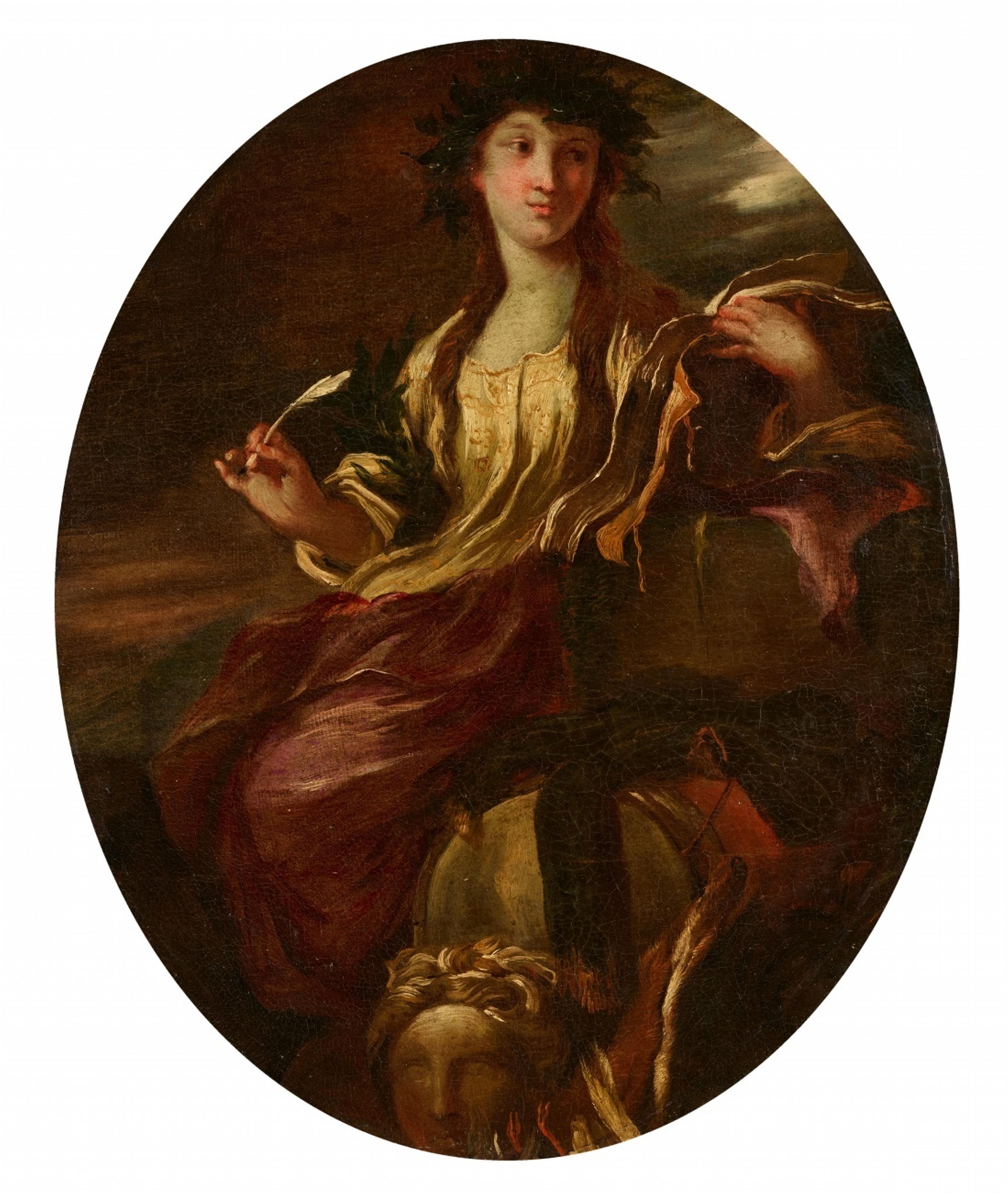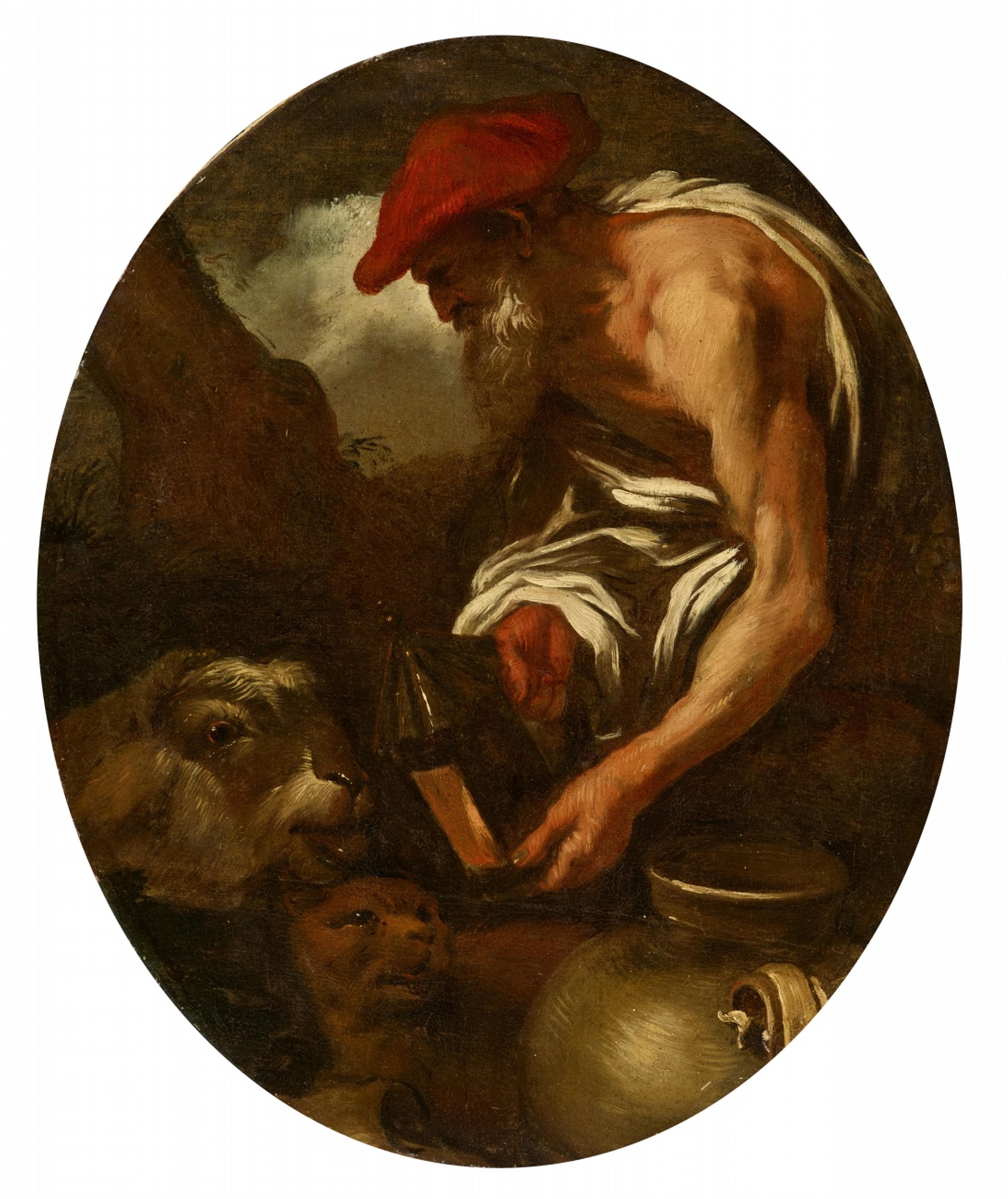Giovanni Benedetto Castiglione, called Grechetto
Allegory of the Arts
The Philosopher Diogenes
Oil on canvas (relined). 64.7 x 53.5 cm each (oval).
These two paintings were attributed to Giovanni Benedetto Castiglione following an analysis by Dr Anna Orlando, who described them as “two exquisite original works - squisite opere autografe” and dated them to the artist's mature phase.
Following his artistic training in his home town of Genoa, Giovanni Benedetto Castiglione travelled widely throughout Italy, visiting Rome, Naples, Mantua and Venice. An innovative and talented artist, Castiglione invented the monotype technique and was a remarkable draughtsman. He was also versatile and cultivated, often choosing complex motifs, enigmatic allegorical depictions and mythological subjects for his works.
These two paintings both reflect the artist's cultural interests, which were closely connected to Neo-Stoicism. The chosen subject expresses complex allegorical connections that interact in an almost philosophical dialogue.
The allegory of the arts, which can be seen as a parallel to another of Grechetto's preferred subjects, is to be regarded as a reference to demiurgic artistic activity: Reality is changed and improved through “technè”; whereas Diogenes, who sought after the noble nature of human beings and in the end found only animals, embodies the unattainability of the desired ideal.
The artist expresses a complex message in the way in which the two motifs interact with one another: Although the arts strive to change nature in order to create a refined and more dignified reality, Diogenes bears witness to the mundane and brutish nature of humankind, and thus to the impossibility of creating a better reality through intellectual activity.
Certificate
Dr Anna Orlando, Genoa, January 2012.
Provenance
Italian private collection.




